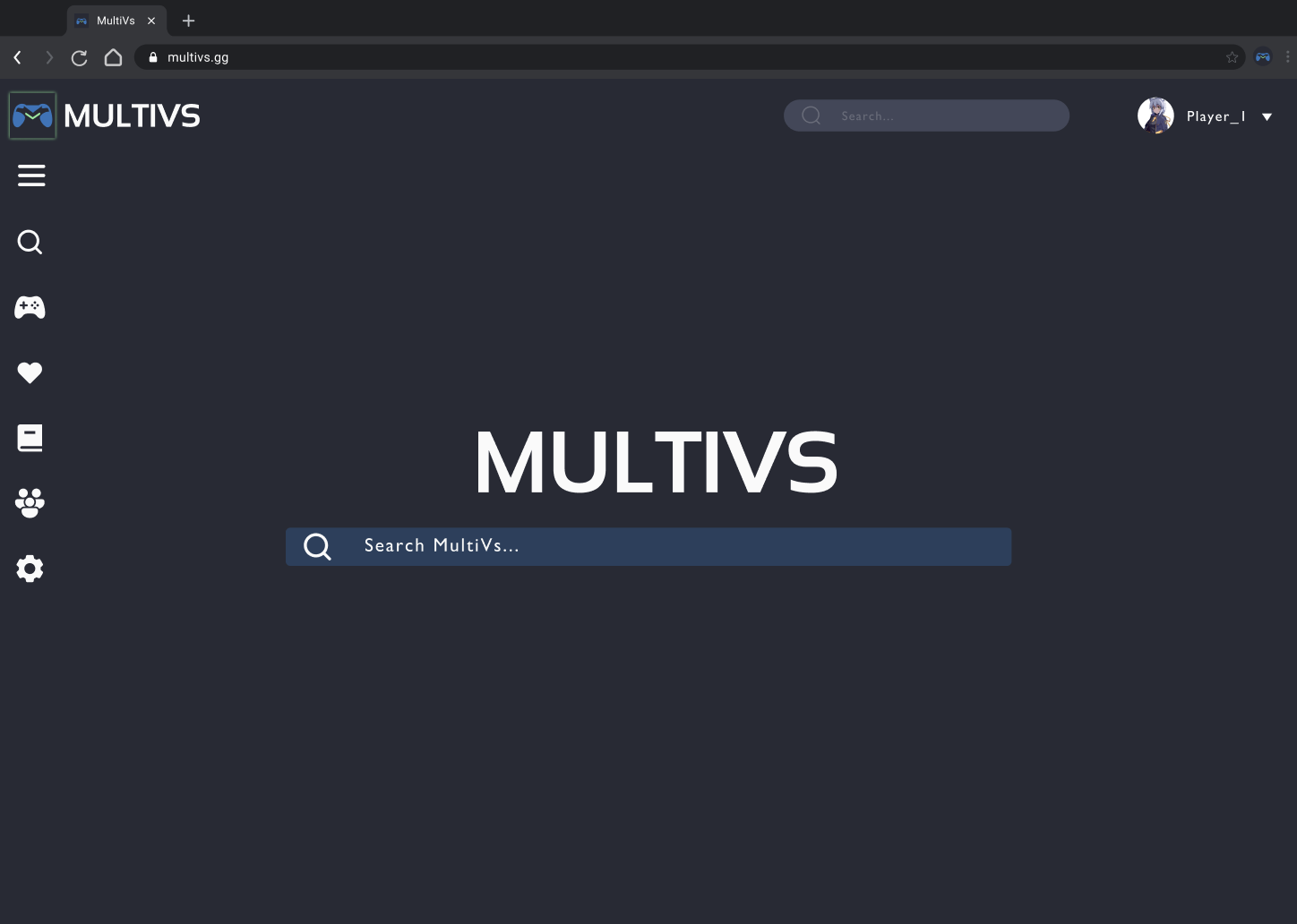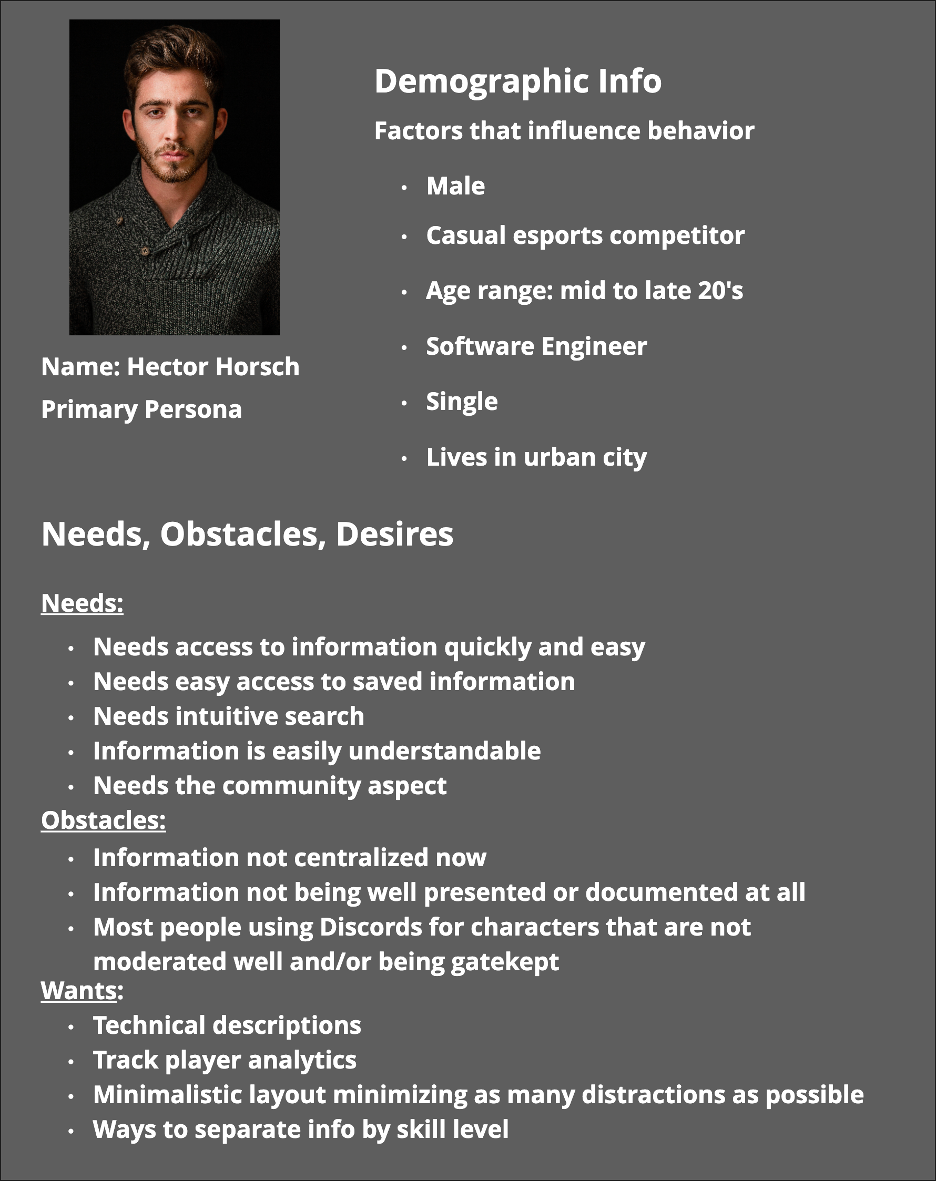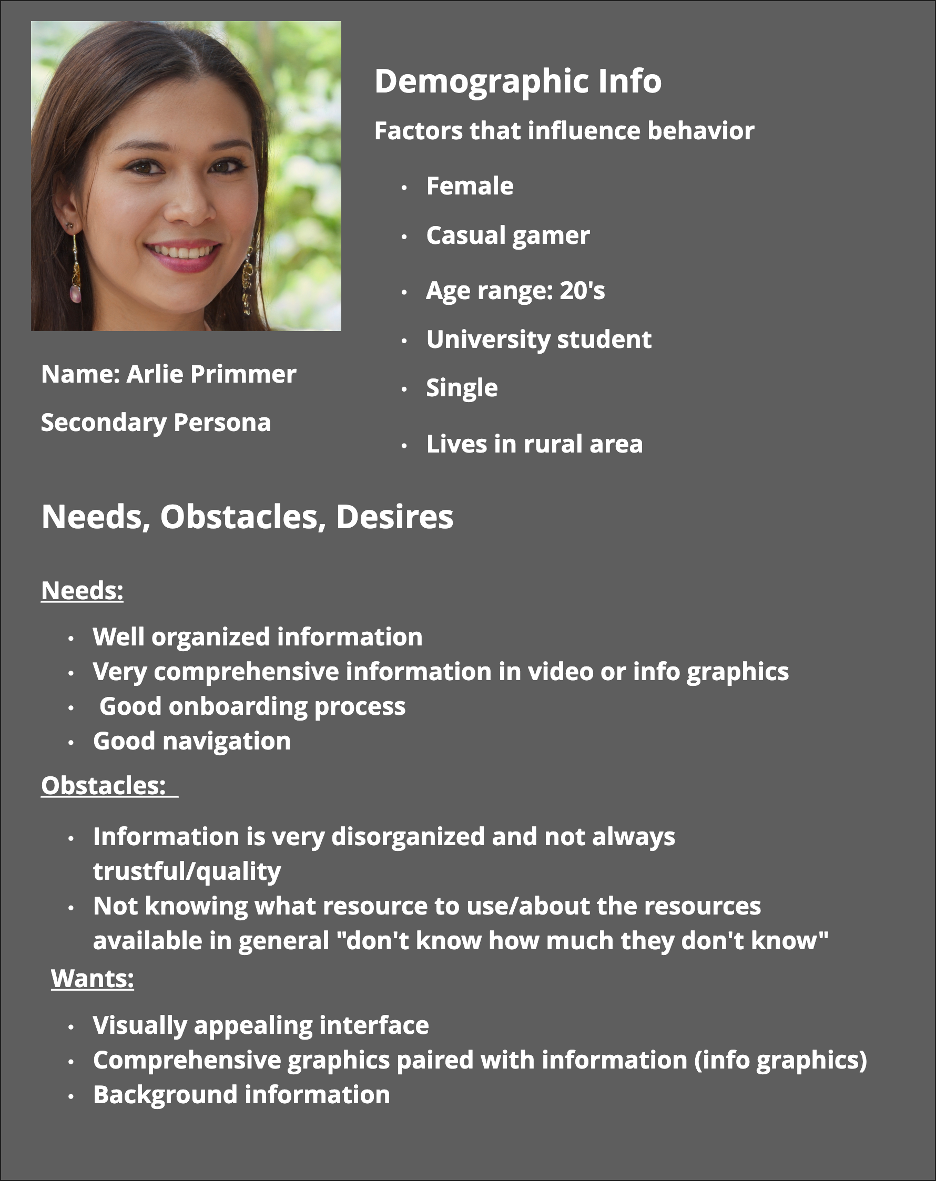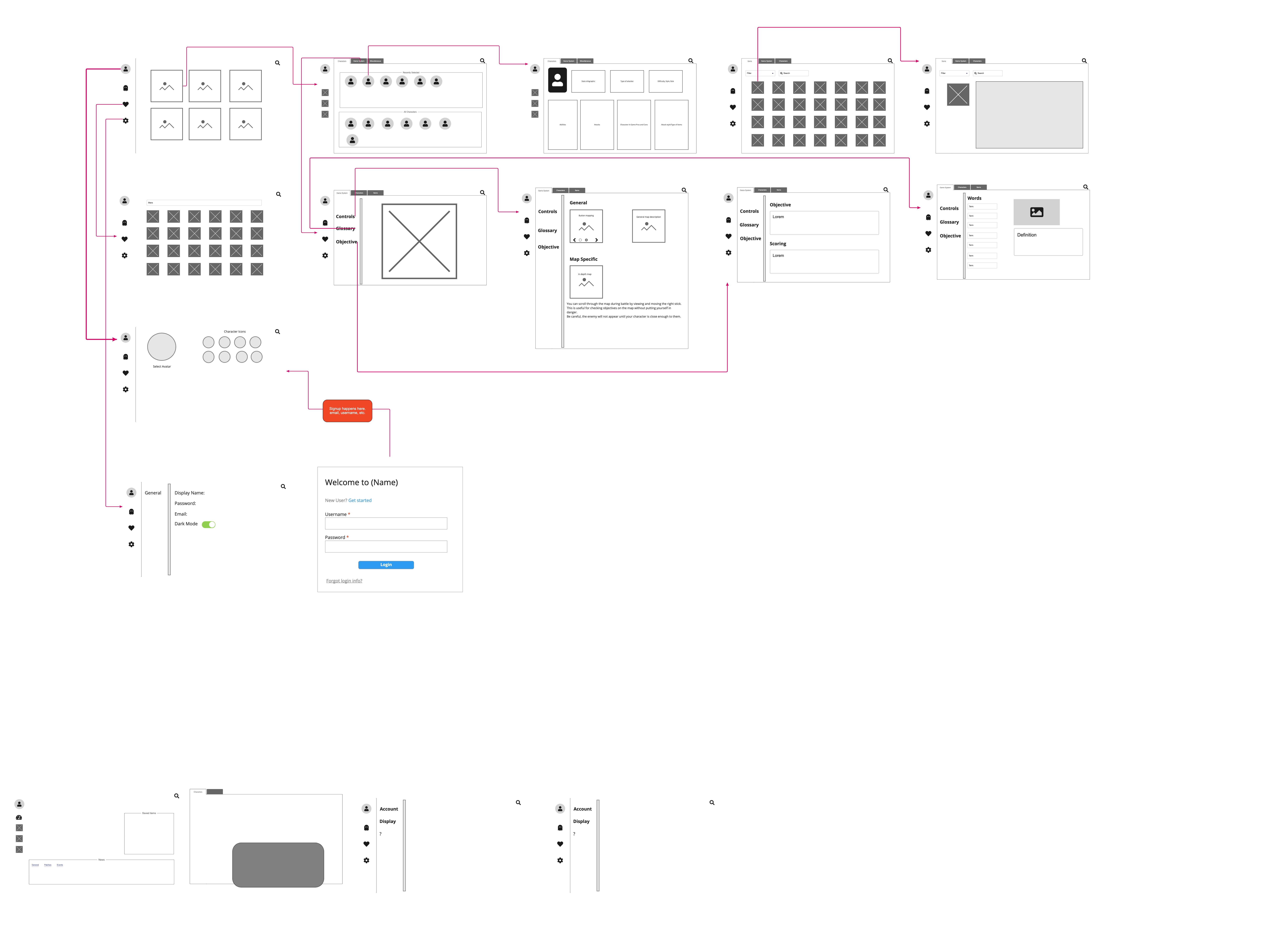
A website-based interactive conceptual prototype designed around allowing gamers to have accessible and available information about their favorite games.
In my Senior Capstone Class, I worked with my teammates Katie, Samantha, Darian, and Furquaan to create a gaming resource called MultiVs.
MultiVs is a web-based, community-based gaming resource whose purpose is to consolidate complex information into a more easily accessible and palatable form.
Our team aimed to achieve three main goals.
Mason was recommended a popular new game by one of his gaming friends. However, he cannot find reliable advice about the characters and their play style. Another one of his friends sent him a link to a new website called MultiVs.
MultiVs is an encompassing gaming resource. It allows our audience to find information from our game library.
This case study will go through the process of GDD or Goal-Directed Design. This process is defined as design thinking by Alan Cooper. This process is to help designers design a way for users to reach their end goal.
This process focuses on five stages: Research Phase, Modeling Phase, Requirements Phase, Frameworks Phase, and Refinement Phase.
When we started our project together, we had several different ideas, but we all wanted to do something in Video Games. So in our Kick-off Meeting, we began brainstorming ideas. We decided on creating a gaming resource based on competitive games.
From our Kick-off Meeting, we started our Literature Review and Competitor Audit. We split into teams working on the Literature Review and Competitive Audit. I worked on the Competitive Audit finding sources and used our comparison to decide what we needed to do next. I also was working time on the color palette for this project so that our UI would have cohesion.

After we completed our Competitive Audit and Literature Review, we created preliminary personas based on the information we had gathered and our assumptions. We used this to measure our final persona after our user interviews.
According to the User Interviews, users wanted to use other player resources but had difficulty navigating current sources. Those with better user interfaces were preferred. They didn't wish for the game companies' official advice. These were things that shocked us. It was unexpected to discover this.
We used these user interviews to build our final personas in the modeling phase.
The two photos below are our finalized personas. We analyzed our interviews using affinity mapping and created our two personas.
Hector was our primary persona as we originally planned to aim the prototype towards him as he was supposed to be an intermediate esports competitor. Meanwhile, our secondary persona Arlie is more of a casual gamer.


We implemented changes based on our affinity mapping and personas conducted earlier to make our prototype successful. As a result, we developed a Product Problem Statement.
In this phase, we began working on our prototype. We set up the wireframe. As this is only a low-fidelity prototype, we can create screens without much interaction except for navigation lines and buttons. Sometimes this can be on something as simple as a bunch of mini designs on sticky notes. However, we chose to use Miro and its platform with wireframe templates. Our wireframe is in the photo directly below.

Once our wireframe was complete, we developed a low-fidelity prototype using Figma. We started creating our navigation and buttons within the prototype. By this time, we used the finalized color palette to create forms and different screens for the prototype.
We then began some more user testing to see where they thought we could improve on the prototype. We used their feedback to finalize our prototype into a high-fidelity prototype where the interactions are well used.
This project was great to work on with my teammates. It was a bit of a challenge to determine a color palette for this project. It was a challenge that I wanted to take care of because of Earth Hour. My team and I didn't focus on a color palette and had difficulty with iconography then. The iconography and color seemed to confuse some. However, I am glad to have spent the time to work on this prototype to create such a great-looking prototype.